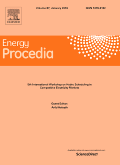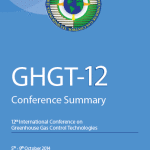Authors: Philip Loldrup Fosbøl · Jozsef Gaspar · Sören Ehlers · Alfons Kather · Patrick Briot · Michiel Nienoord · Purvil Khakharia · Yann Le Moullec · Olaf T. Berglihn · Hanne Kvamsdal
Affiliations: Technical University of Denmark, Technische Universität Hamburg-Harburg, IFP Energies Nouvelles, TNO
 Reference: Energy Procedia, Volume 63, Pages 1-8184 (2014), pp. 27-44
Reference: Energy Procedia, Volume 63, Pages 1-8184 (2014), pp. 27-44
12th International Conference on Greenhouse Gas Control Technologies, GHGT-12
Edited by Tim Dixon, Howard Herzog and Sian Twinning
Abstract
The Octavius FP7 project focuses on demonstration of CO2 capture for zero emission power generation. As part of this work many partners are involved using different rate based simulation tools to develop tomorrow’s new power plants. A benchmarking is performed, in order to synchronize accuracy and quality control the used modeling tools. The aim is to have 6 independent partners produce results on simulation tasks which are well defined in this work. The results show the performance of a typical simulation tool ranging from in-house process simulator to Aspen Plus® and combination of the two, using CAPE-Open. Definitions of the models are outlined describing the used assumptions on mass transfer correlations, hydraulics, thermodynamic models, kinetics, and property packages. A sensitivity study is carried out for absorption and desorption which shows the performance of capture percentage, specific reboiler duties, loading of rich and lean solutions, pressure drop, flooding, concentration and temperature profiles, product purity, and condenser performance. The overall conclusion is that most predicted properties vary in the order of 5-10% percent, often more than accuracy in experimental pilot plant measurements. There is a general good resemblance between modeling results. A few important properties like specific reboiler duty and reboiler temperature plus concentration and temperature profiles vary more than expected. Also high flooding scenarios in the stripper are difficult cases. Efficiencies are discussed as part of the summary. Recommendations for modeling principles and best practice are given.
Full text: 1-s2.0-S1876610214018190
